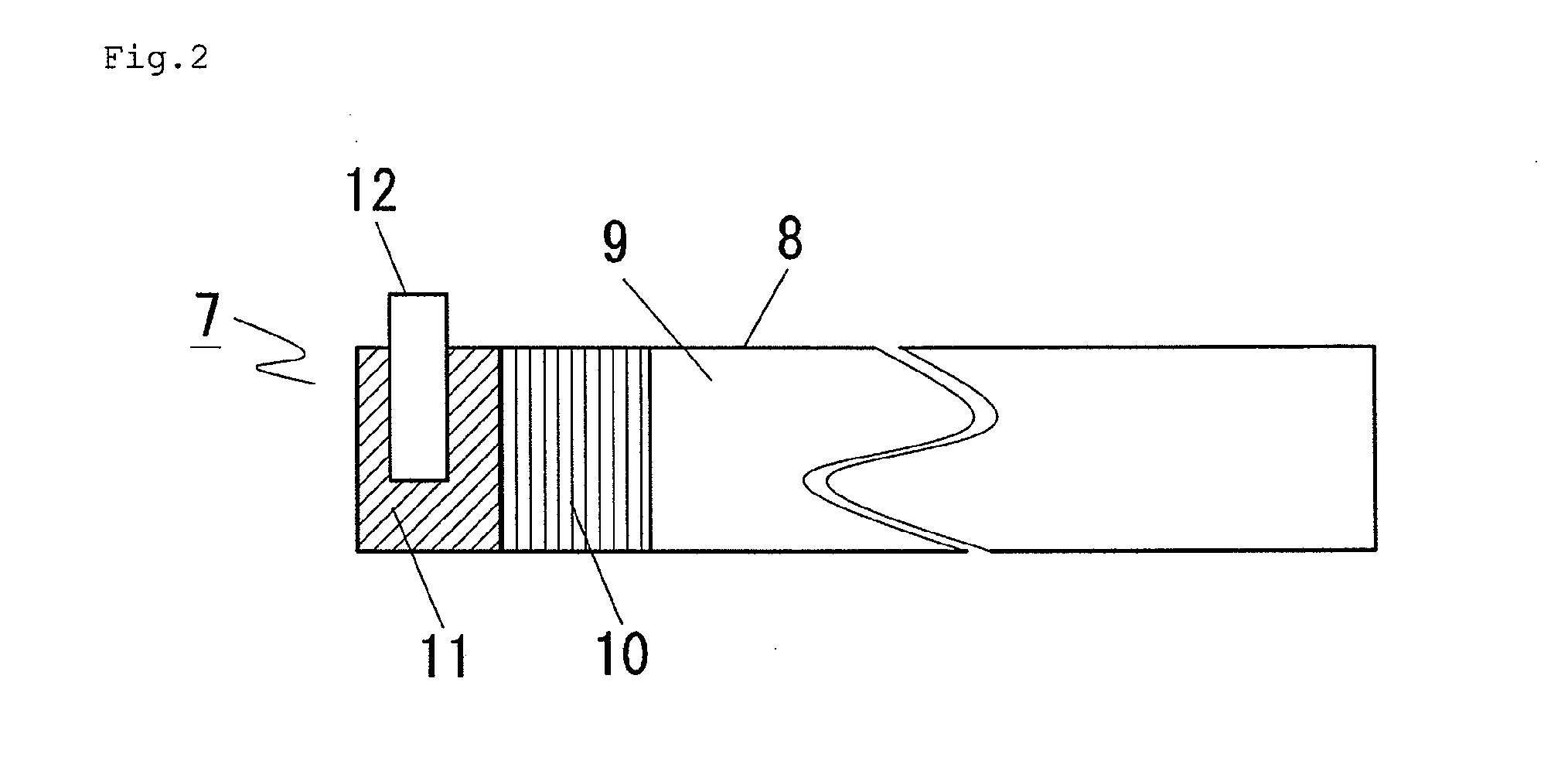Lithium ion battery
a technology ion battery, which is applied in the field of lithium ion battery, can solve the problems of reducing and decomposing ionic liquid, requiring higher safety, and causing enormous energy, and achieves the effects of reducing resistance, reducing the number of ionic liquids, and suppressing the reduction and decomposition of ionic liquids
- Summary
- Abstract
- Description
- Claims
- Application Information
AI Technical Summary
Benefits of technology
Problems solved by technology
Method used
Image
Examples
example 1
[0059]First, preparation of a cathode is described with reference to FIG. 1. A cathode slurry was prepared by adding N-methylpyrrolidone to a mixture prepared by mixing 85% by mass of LiMn2O4, 7% by mass of acetylene black which is a conductive auxiliary agent and 8% by mass of polyvinylidene fluoride which is a binder and further mixing the mixture. The slurry was applied to both sides of 20 μm-thick Al foil 2 which was a current collector by the Doctor blade method so that the thickness after roll press was 160 μm, thereby forming cathode active material coated part 3. Cathode active material uncoated part 4 where no cathode active material was applied on either side was formed on both ends, and cathode conductive tab 6 was provided on one cathode active material uncoated part 4, and the adjacent region where the material was applied only on one side was formed to be cathode active material uncoated part 5 to give cathode 1.
[0060]Next, preparation of an anode is described with ref...
example 2
[0071]Example 2 was carried out in the same manner as in Example 1 except for using graphite coated with amorphous carbon (coating amount of amorphous carbon being about 10% by mass) in the same manner as in Example 1 by using a phenolic resin solution in methanol having a solid content of 50% by mass.
example 3
[0072]Example 3 was carried out in the same manner as in Example 1 except for using graphite coated with amorphous carbon in the same manner as in Example 1 (coating amount of amorphous carbon being about 15% by mass) by immersing and dispersing 100 g of graphite carbon in 230 g of a phenolic resin solution in methanol having a solid content of 50% by mass.
PUM
| Property | Measurement | Unit |
|---|---|---|
| interlayer distance | aaaaa | aaaaa |
| specific surface area | aaaaa | aaaaa |
| temperature | aaaaa | aaaaa |
Abstract
Description
Claims
Application Information
 Login to View More
Login to View More - R&D
- Intellectual Property
- Life Sciences
- Materials
- Tech Scout
- Unparalleled Data Quality
- Higher Quality Content
- 60% Fewer Hallucinations
Browse by: Latest US Patents, China's latest patents, Technical Efficacy Thesaurus, Application Domain, Technology Topic, Popular Technical Reports.
© 2025 PatSnap. All rights reserved.Legal|Privacy policy|Modern Slavery Act Transparency Statement|Sitemap|About US| Contact US: help@patsnap.com



